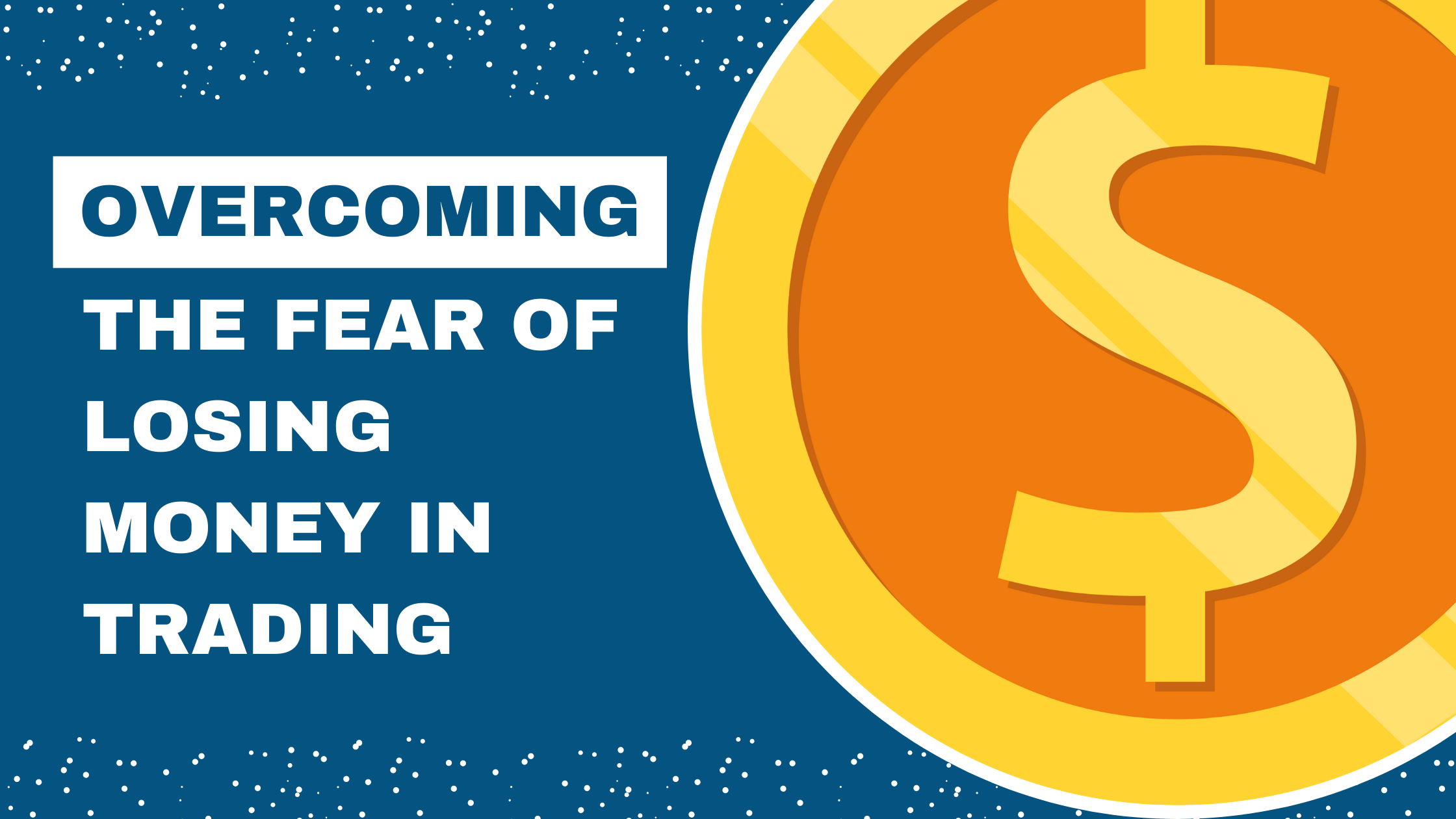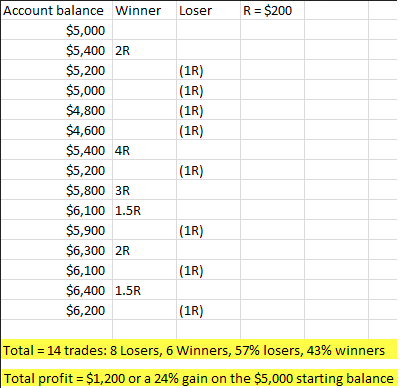 If you want to be a trader, you must accept that losses are inevitable. If you’re still searching for a “Holy Grail” trading system with an unbeatable 75% win rate, it’s time to let go of that illusion. No system can completely eliminate losses. As cliché as it sounds, losing is an integral part of winning in trading—the two go hand in hand. Without learning how to lose the right way, you’ll never achieve consistent profitability.
If you want to be a trader, you must accept that losses are inevitable. If you’re still searching for a “Holy Grail” trading system with an unbeatable 75% win rate, it’s time to let go of that illusion. No system can completely eliminate losses. As cliché as it sounds, losing is an integral part of winning in trading—the two go hand in hand. Without learning how to lose the right way, you’ll never achieve consistent profitability.
Here’s a reality check: All professional traders experience losses. They understand that losing is simply part of the game. Unfortunately, many traders approach each trade with a deep fear of losing money, often becoming emotionally attached to the outcome. This mindset can be a major obstacle to long-term success.
Why Traders Fear Losing Money? Traders often experience fear of losing money for several key reasons:
- Misunderstanding Probability – Many traders don’t realize that, mathematically, it’s possible to lose more trades than they win and still be highly profitable. A proper risk-reward ratio proves this.
- General Fear of Losing Money – Some traders are naturally anxious about financial loss, which can cloud their judgment and decision-making.
- Overleveraging – Risking too much on a single trade creates unnecessary stress, leading to sleepless nights, emotional swings, and poor trading decisions.
In the rest of this article, I’ll dive deeper into the fear of losing money in the markets and how to overcome it. The insights shared here are powerful—read carefully, and revisit them if needed. Mastering these concepts will help you eliminate fear, build confidence, and develop the mindset of a disciplined, emotionally steady trader.
Transforming the Fear of Losing Money into Confidence
Fear of losing money is a natural and often beneficial emotion. Without it, financial chaos—both in personal finance and the markets—would be even more prevalent. It’s human nature to protect what we’ve worked hard to earn.
However, in trading, this instinct to be defensive and emotionally attached to money must be transformed into a more productive mindset.
Rather than fearing losses, shift your focus to the control you have over every trade. As a trader, you dictate your risk management through stop losses and position sizing. These tools empower you to define your risk before entering a trade, allowing you to approach the markets with confidence instead of fear. By using them effectively, you take control of your funds rather than letting emotions dictate your decisions.
That said, simply applying risk management tools isn’t always enough to completely eliminate the fear of losing. More is required to develop a truly fearless trading mindset.
Ask Yourself These Critical Questions
If you feel fear—or any strong emotion—when placing a trade, take a step back and ask yourself three important questions. Be brutally honest with your answers.
1. Am I truly prepared to trade with real money? If you’re risking your hard-earned money without a clear trading edge, a solid strategy, or full confidence in your market analysis, you probably shouldn’t be trading yet. Fear often stems from a lack of preparation—many traders don’t have a mastered strategy, a trading plan, or a journal to track progress. Without these essentials, it’s natural to feel uneasy when placing trades.
2. Am I risking more than I can comfortably afford to lose? If you haven’t defined your per-trade risk tolerance, that’s your first step. This is the dollar amount you can lose on any given trade without stress or emotional turmoil. Remember, any trade can result in a loss—that’s just part of trading. Assess your overall financial situation and determine a reasonable risk amount per trade. Be honest with yourself. Successful traders think like risk managers, not gamblers hoping to get lucky. Your mindset directly affects your results.
3. Do I fully understand the math behind trading? Trading success isn’t about winning every trade—it’s about managing risk and reward. Over a series of 20 trades, you can expect to lose 35–45% of them, and even professional traders lose 40–60% of the time. However, with a proper risk-reward ratio, you can still be highly profitable despite frequent losses. Understanding this concept is key to overcoming the fear of losing money.
Now, let’s dive deeper into how risk-reward works and why it’s your best weapon against fear.
Embrace the Mindset That Losing Is Okay
Losing is not just acceptable—it’s essential to long-term trading success. When you cut losses quickly, you’re preserving capital, allowing your winning trades to cover the losses and still leave you with profit. This is where the power of risk-reward over multiple trades comes into play.
Even highly successful traders often lose more trades than they win. To illustrate this, let’s analyze a case study with 14 trades and a 43% win rate—meaning you lose 57% of the time and win only 43%. At first, it might seem counterintuitive that losing most of your trades can still lead to profitability.
However, the reality is that profitable traders focus on the bigger picture, not individual trades. As long as your risk-reward ratio is favorable, losses should not be a source of fear. Instead, they are simply part of the process that leads to overall profitability.
Trust Your Strategy and the Math
As demonstrated in the hypothetical track record, the numbers don’t lie—even with a 57% loss rate, profitability is achievable if you allow winners to reach at least 2R while keeping losses capped at -1R or less. In some cases, it may make sense to take a 1.5R profit, depending on market conditions. The key takeaway? A solid average risk-reward ratio (around 1:1.5 or 1:2) can lead to long-term success.
The real “secret” is simple: keep all losses at -1R or less and only trade when your edge is present. This disciplined approach ensures that, over time, your profits outweigh your losses.
Having a clear trading plan also makes losses easier to accept. When you trade with a roadmap in place, your brain perceives losses as a logical part of the process rather than as something to fear. This is where the “set and forget” approach becomes invaluable—it helps train your mind to accept losses without emotional interference. By doing so, you avoid unnecessary trade manipulation, which often leads to avoidable losses.
The “Sleepless Night” Test
Everything we’ve covered so far is crucial, but there’s one simple fear test that can reveal a lot about your trading mindset: How do you feel before bed when you have an open trade?
If you find yourself obsessing over your trade, unable to stop checking your screen, or struggling to sleep, it’s a clear sign that fear of losing is still affecting you. Here’s a simple rule to follow:
If you can’t go to sleep feeling calm and confident about your trades, then:
- You’re risking too much—your position size is too large, making the potential loss feel overwhelming.
- You lack confidence in your strategy—you’re unsure of your edge, and deep down, you don’t fully trust your approach.
This test is a powerful reality check. If your trades are keeping you up at night, it’s time to adjust either your risk management or your confidence in your trading plan.
Conclusion: Overcoming the Fear of Losing in Trading
 The fear of losing money can cripple a trader, leading to missed opportunities, constant self-doubt, and even sleepless nights. If we want to succeed in trading, we must conquer this fear.
The fear of losing money can cripple a trader, leading to missed opportunities, constant self-doubt, and even sleepless nights. If we want to succeed in trading, we must conquer this fear.
The first step is acceptance—losing trades are inevitable, no matter how skilled you become. Instead of trying to avoid losses, focus on managing and containing them. By implementing the strategies discussed, you can shift your mindset and trade with confidence. Here’s a quick recap:
- Master your strategy and trust it – Learn your trading edge inside and out, commit to it, and believe in your approach.
- Manage risk effectively – Keep losses at -1R or less while targeting an average 1:2 risk-reward ratio per trade. Let some winners run to achieve 1:3, 1:4, or even higher risk-reward outcomes.
- Trust the math – Even with a 40% win rate, a solid risk-reward ratio of 1:1.5 or better can lead to long-term profitability.
Fear fades when you have a clear plan, a defined edge, and confidence in your execution. Master these principles, and you’ll trade with a mindset built for success.


